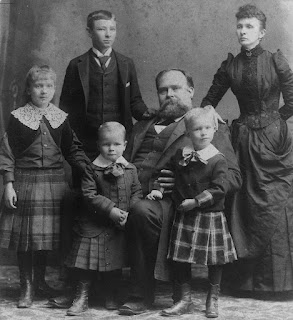The History of Bayou Bend
When I was writing about our trip to Houston, I did some research into one of our stops, the Bayou Bend House. I found it has a fascinating history, so I wanted to research more and write about that. This is what I have learned about Ima Hogg, the woman who originally owned the house.
The house has the appearance of a southern Civil War-era
plantation. Perhaps there were some of those in Houston in the 1860s, but the
Bayou Bend House wasn’t one of them. It wasn’t built until 1928. Even the original
owner, Miss Hogg, wasn’t born until 1882.
Her family had been part of the southern aristocracy in the
Civil War era. Her great-grandfather, Thomas Hogg, had served in the state
legislatures of Georgia, Alabama and Mississippi after his service in the
Revolutionary War.
Her paternal grandparents, Joseph and Lucanda Hogg, moved
from Alabama to Texas in 1836 as a young couple. There Joseph established a law
practice, and later held political offices. The Hogg family
owned more than two dozen slaves at the outbreak of the Civil War.
Joseph Hogg supported both the admission of the independent Republic
of Texas to the United States, and its secession into the Confederacy. He also
served in both the Mexican American War and the Civil War (as a Confederate Brigadier
General). During the Civil War, he died from dysentery.
A year after he died, his wife also passed away. The couple had
six children, some of whom were not yet adults. That included James Hogg, who
was then raised by his sister Frances.
After his parents’
death, Jim left school and started working in the print shop of his hometown
newspaper, the Rusk Chronicle. He later became the publisher of two
other East Texas newspapers. Like his father, he became a politician. He was state
attorney general of Texas in 1886. At that time, he and his wife Sarah were
growing their family, having three sons and a daughter between 1875 and 1887. Ima
was born in 1882. In 1890, he was elected
governor of Texas, a position he held for four years.
In 1895, when Jim Hogg left office, he soon became a widower
and single father. Once again, Frances was called in to help.
During his early life and as a politician, Jim was not a
wealthy man. Still, during his time as attorney general and governor, he was
able to hire a private tutor for Ima and provide piano lessons starting when
she was three years old.
As governor, he made connections that allowed him to invest
in land and oil wells. In 1901, he became a co-founder of what later became
Texaco. He died in 1906, from complications of a railroad accident he had been
in the previous year.
By then, he had the means to send his children to
universities. The family had moved from East Texas to Austin when he was
elected Attorney General, so Ima attended the University of Texas at Austin.
She then studied music in both New York City and Vienna Austria before
returning to Texas in 1909. After her return, she moved to Houston and founded
the Houston Symphony Orchestra.
Her older brother, William, had already moved to Houston to
handle their late father’s business affairs there. Their younger brother Mike
joined them there a short time later. All three became involved in Houston’s
civic affairs, serving on both public and charitable boards, and donating money
generously.
Later her brothers partnered with Mike’s law school
classmate Hugh Potter to develop the area near River Oaks Country Club in Houston.
The private golf course had opened in 1923, but there were acres of vacant land
surrounding it, only a short distance from downtown Houston. One section of it
had already been planned for homes when the Hogg Brothers and Potter bought it
and surrounding property from the original owners and formed the River Oaks
Land Corporation in 1924. This corporation deeded more than 1,500 acres to the
City of Houston to form Memorial Park, and kept another 1,100 acres for residential
and commercial development.
From then until 1947, this partnership developed 19 more subdivisions
in the 1,100 acres that comprise the River Oaks neighborhood. The original
River Oaks Country Club Estates are huge mansions (some more than 10,000 square
feet) on half-acre and larger lots. Other homes built in this era were more modest,
and at the time, affordable to middle class residents of Houston.
One of the earliest River Oaks Country Club Estates homes is
the Bayou Bend House, built in 1928. Ima Hogg owned it along with her two brothers who had relocated to Houston. They commissioned
architect Joseph Staub to design it. Ima also greatly influenced how it was
built.
The house is situated on 14 acres, so is some distance from
any of the other homes in River Oaks Country Club Estates. It overlooks the golf
course on one side and Memorial Park on the other. The other homes in Country
Club Estates are on the opposite side of the golf course.
Country Club Estates was covered with dense, tall trees and
a thick undergrowth in 1927, when construction of this house and others began. Ima
Hogg wanted as few of the trees as possible to be disturbed, so only one was. Eight
formal gardens surrounding this mansion were built around the trees.
Ima had intended for her brothers to live in the house with her.
But Mike did not after marrying, and William died in 1930 while vacationing
with Ima in Europe. After William’s death Ima lived in the Bayou Bend House for
the next 27 years. She then moved out and deeded it to the Houston Museum of Fine
Arts, which owns it to this day. It is a showcase of American art and home décor,
open to the public since 1966.




Comments
Post a Comment